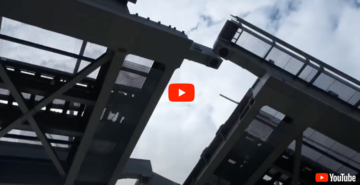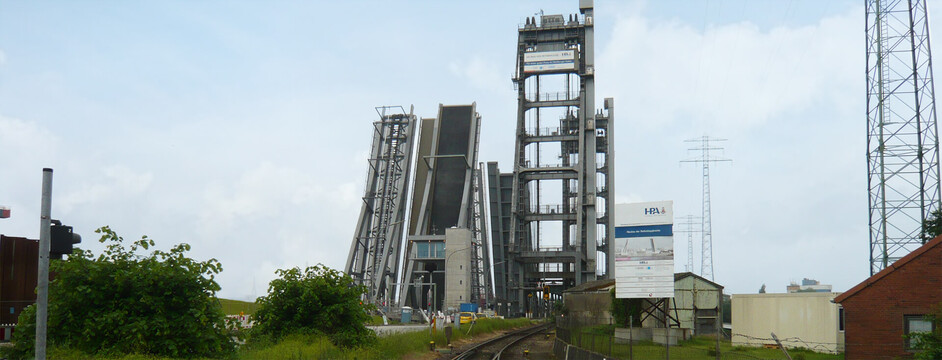
Europe's largest bascule bridge – construction of the new Rethe bridge
Starting position
In 1934, Rethe lift bridge was opened in the Port of Hamburg after 15 years of construction. It lies in the southern harbour area, spans the River Rethe at its mouth into the Reiherstieg, connects the Hohe Schaar with Neuhof and therefore represents an important hub for cars, trucks and trains coming from and to the south. It is also essential for port traffic that cannot use Köhlbrand bridge. Köhlbrand bridge and Kattwyk bridge are the two important east-west connections in the Port of Hamburg. If one of the two bridges is closed, Rethe bridge has an important role to play, since it is halfway between these two bridges and thus provides an alternative route over the other bridge.
With its 50-meter-high lifting towers and a span of 77 meters, the bridge was one of the largest lifting bridges when it was built. In the meantime, however, the structure is getting on in years and can no longer withstand the increased volume of traffic, even though a basic overhaul was carried out in 1985. The heavy traffic involving the bridge being opened 3,000 times every year resulted in damage to the reinforced concrete structure and the mechanical systems, which made the new construction of the bridge necessary. The insufficient width of the lift bridge was also an additional reason for this.
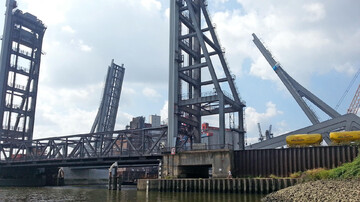
The Task
The new construction of Rethe bridge was to result in the further expansion of the infrastructure in the Port of Hamburg and the creation of a transport solution for the next 100 years. Rail traffic crossed road traffic on the approach to the previous lift bridge, which resulted in long waiting times and severe restrictions. With the construction of the new Rethe bascule bridge, this situation could be defused by building the bascule bridge as a two-part, two-wing bascule bridge, i.e. road and rail traffic would receive separate bridge superstructures (wide of the road bridge: approx. 14 m, width of the railway bridge approx. 10.2 m). In addition, in the access area to the bridge, road traffic will be directed over the railroad tracks using ramps, so that rail and road traffic no longer obstruct one another.
Changing the bridge type from a lift bridge to a bascule bridge resulted in an unlimited headroom and a widening of the shipping channel by 20 m to 64 metres being achieved, which benefits shipping. The operations building is to the north of the bridge, while the steering position is to south. Each bridge flap sits on an underground flap pillar which houses the machines and electrical systems. The pillars are connected underground via a supply culvert through which control, energy and data lines run from one side of the bridge to the other.
Since its construction, Hamburg now has one more attraction, because Rethe bridge is the largest bascule bridge in Europe and one of the largest in the world, with a span of 104.2 m between the pivot bearings. 8 hydraulic cylinders (2 per flap), each 17 meters in length, are used to open and close the 4 bridge flaps. DriveCon took over the implementation and workshop planning for the control and energy technology as well as the construction supervision for the electrical engineering and the software programming with the associated visualisation.
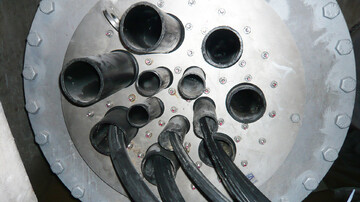
Services
We were responsible on this project for the software programming, visualisation and start-up. We were also commissioned to plan the electrical engineering in work phases 5, 6 and 8 according to the Official Scale of Fees for Services by Architects and Engineers (HOAI). One of the tasks here involved coordinating the electrical engineering with the construction, steel construction and mechanical engineering trades. In addition, we also prepared a risk assessment in accordance with the Machinery Directive and the implementation and workshop planning for the I&C and energy technology.
Our specialist staff also took over the preparation of the overall electrical design for the power supply, earthing and lightning protection equipment, consisting of medium voltage switchgear, 2 medium voltage transformers with an output of 800 kVA, diesel emergency power generators with 450 kVA, a UPS system with 120 kVA, a low voltage main distribution board with 2,500 A, 4 low voltage sub-distribution boards with approx. 800 A each, the central control system and the control of the road and shipping signal systems along with the video and communication systems.
A particularly interesting task involved the programming and start-up of the control software for the energy supply and the control centre for the bascule bridge, whereby high demands were placed on the redundant energy supply. To ensure that the bascule bridge remains functional even in the event of various failure scenarios, numerous redundancies were built in and a complex control system for the energy supply developed so that backup systems are automatically activated. In addition, we were also commissioned with the construction supervision for the electrical engineering as part of our contract.
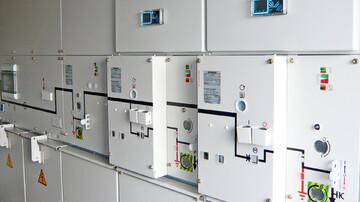
Challenges and special features
A special feature of Rethe bridge is the parallel routing of road and rail traffic on different flaps in one structure, which means that cars and trucks can use the bridge independently of trains. Since the bridge represents an essential and critical junction in the port of Hamburg, the reliability of the bridge is essential. The planning and construction of the energy supply therefore focused on maximum availability. This was realised with double feeds, an emergency power generator and a highly complex energy supply with several fallback levels.
There is no mechanical interlock in the middle of the bridge when the flaps are lowered, but instead, what is known as a finger lock. This requires the exact synchronization of the two flaps, which places high demands on the software programming for the controls, since, for example, the synchronization needs to compensate for weather influences. In order to avoid collisions, potential deformations caused by fluctuations in temperature, structural movements and control inaccuracies were taken into account in this complex control. Due to the synchronization and the associated reduced speed when closing the bridge, the closing process takes 465 seconds. The opening process is much faster and takes 260 seconds.
